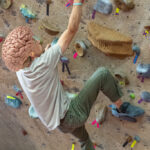Brain Sends, Route Reading Tips & Tricks
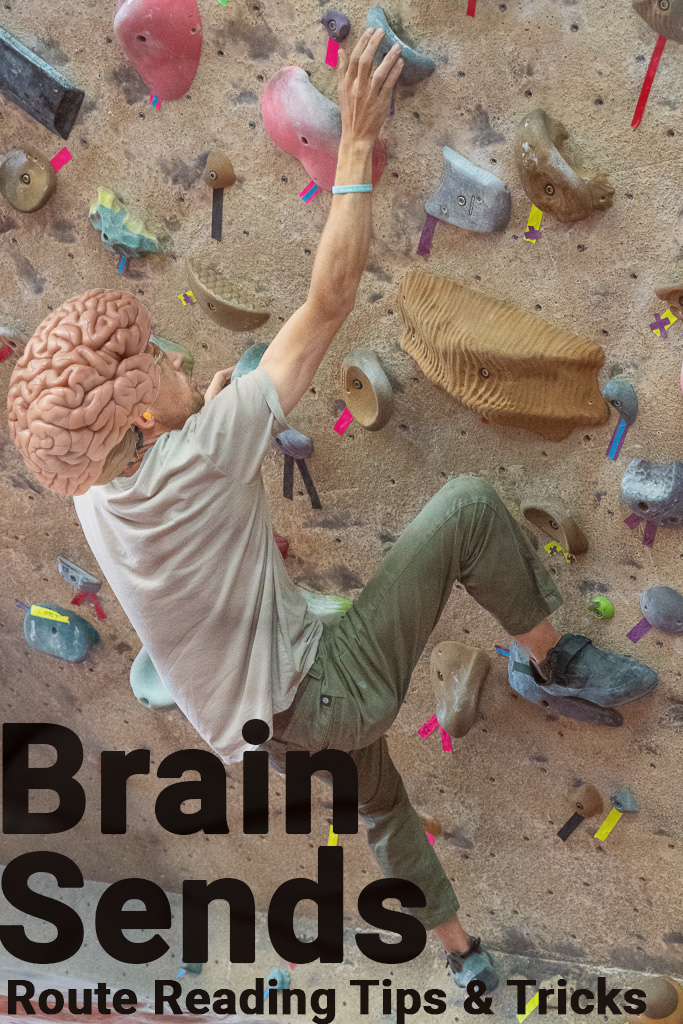
Before you try a climb, do you strategize and make a game plan? Or do you just wing it and hope for the best? If you just hope for the best, this article might be for you. We’ve all seen the video of Adam Ondra laying on the floor (screaming) and pretending to climb his project. But why, and can this help us average climbers? While I don’t think it’s necessary to lay on the floor with a partner applying pressure and yell (I also don’t climb V16 and 5.15+), I do believe a quick brain send can help us climb better and improve our route-reading abilities.
What is a brain send? A mental flash? Before I climb a route or boulder, I like to visualize myself climbing and send it in my mind. This allows me to get a feel for where the climb goes, what holds and sequences I might use, what features are within reach, and set a general expectation for the climb.
First, visualize climbing the route in your mind. Start from the bottom and mentally work through each move: right hand here, left hand there, cross to that hold, bump out to that volume, and so on. On challenging climbs, you’ll encounter points where the next move isn’t clear—moments where your sequence for hands and feet becomes muddled or multiple sequences forward could theoretically exist. Take mental notes of these “problem” sequences and revisit them until you have a confident game plan. Consider how breaking a sequence affects both entering and exiting it. After you have “sent” the climb in your mind, reverse the climb. This time, mentally work from top to bottom and see if your sequence changes or clears up any confusing problem sequences.
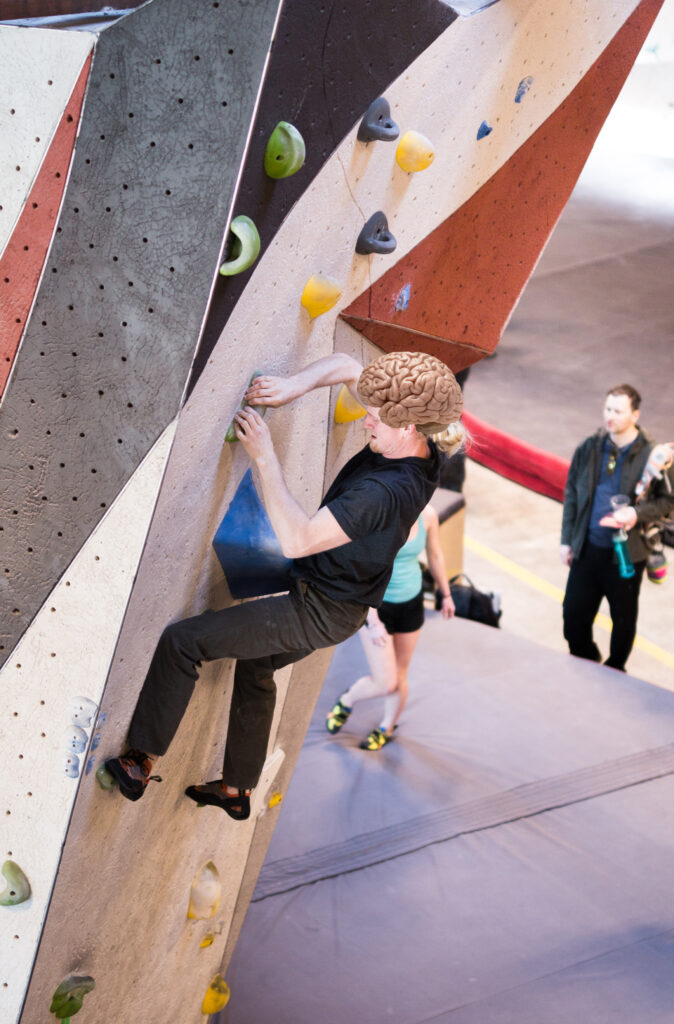
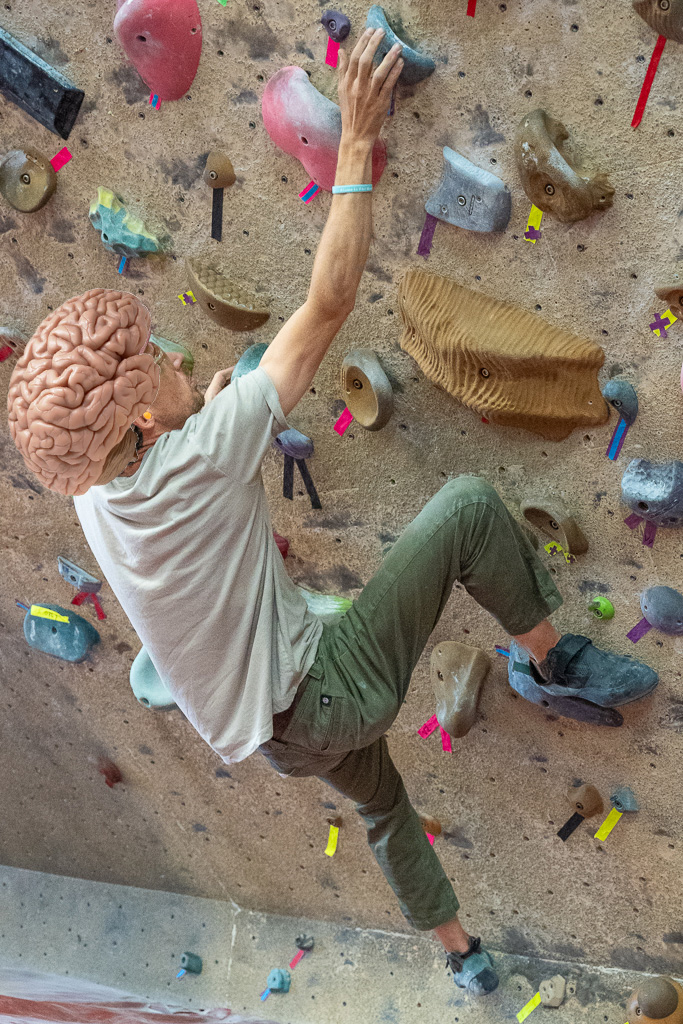
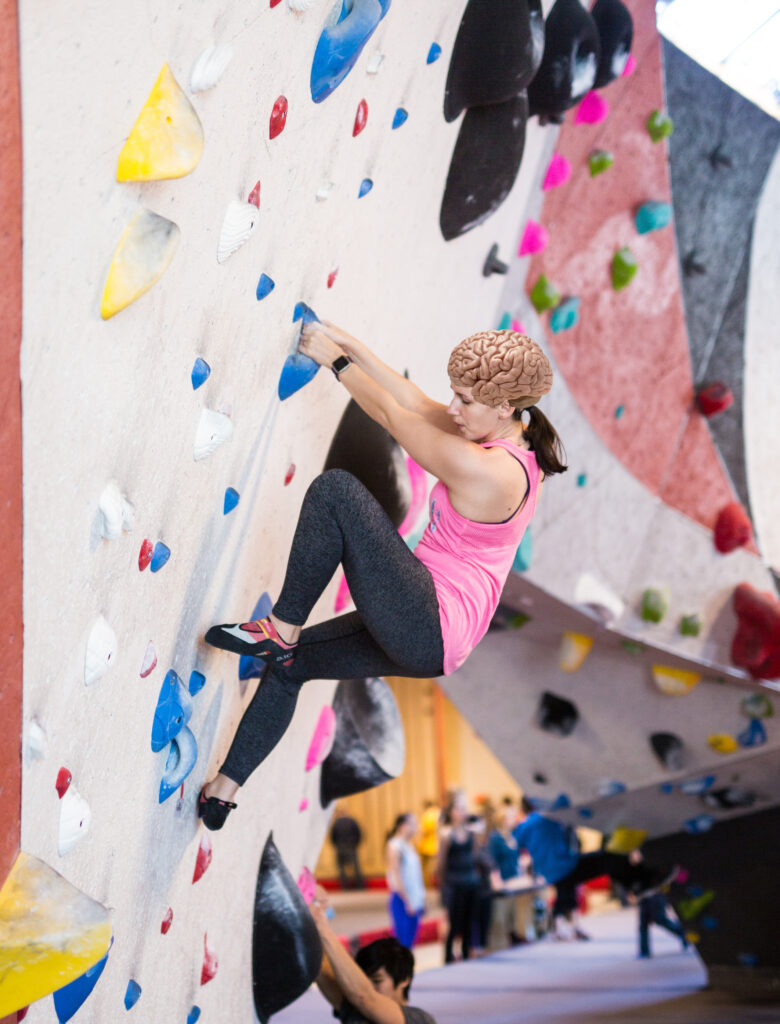
Climbing has a lot of variabilities; it’s not just right-hand, left-hand, and so on. There are just as many, if not more, foot sequences, specific technical positions, and movement factors. When you first start climbing in your head, keep it simple. Focus on the hands. Add the other factors as you get better. When you start to master this technique, you should be able to feel like you are climbing the route, mimicking hand movements in the air, squeezing your core as you envision yourself in high-tension sequences, accounting for pacing, and figuring out resting positions. A wise climber once told me you should be able to climb your path from memory in both the first and third person.
If you have a hard time visualizing the climb in your head, draw the route out on paper. Note the angle, type, and size of the holds. Then go through and write your hand and food sequences on the hold, you can get as specific as you’d like here. Write numbers to correlate to the move’s number in the sequence, hold descriptions (super flat polished foot), grip positions (right hand gaston with thumb wrap), or movement notes (super powerful dead point, aim higher than you think, and get thumb on tick).
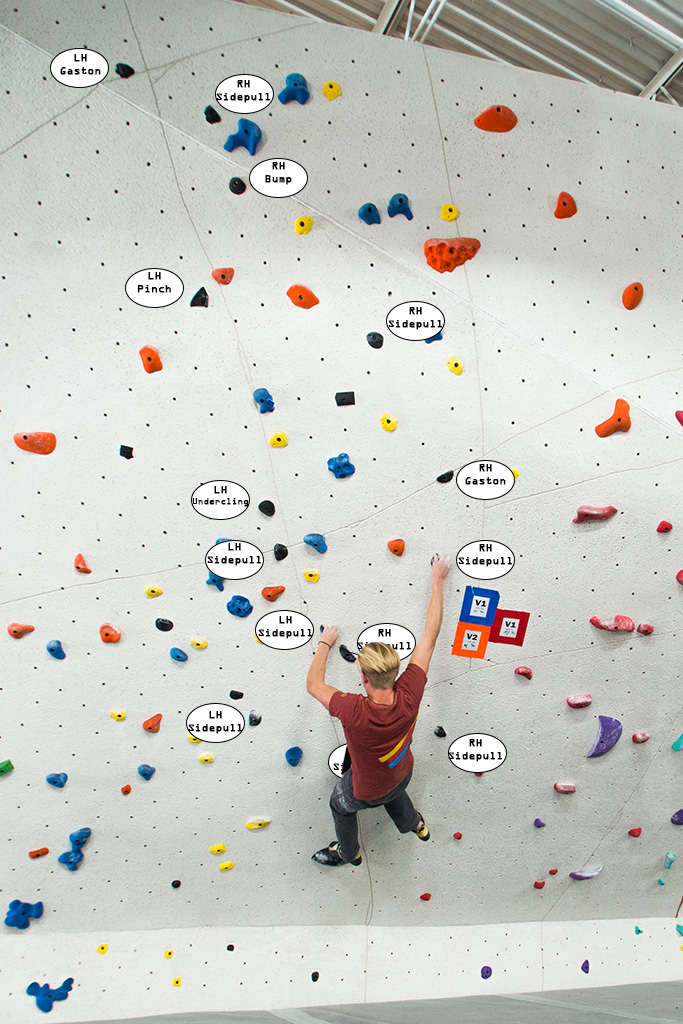
I like to mentally climb my route twice: once how I think the route setter intended and once how I think I would climb it. Think like a route setter and check out our earlier blog post “Hack the System, Think Like a Route Setter” for more tips and tricks on how you can think like a detective and piece together clues left by the setters and other climbers.
After completing a climb, review and analyze your performance. Compare your mental plan with your actual execution. How closely did your mental and physical performance compare? Evaluate what worked well and where you encountered difficulties. Reflect on whether the climb unfolded as expected or presented unexpected challenges. Climbing isn’t just about sending a route once; it’s about refining your approach and technique with each attempt. The more you practice, the better you will get at matching your mental abilities to your physical abilities.
My favorite way to practice brain sends is with flash climbing (doing a climb on your first try). The stakes are never higher than when you first approach a climb. Bonus points if the climb has new holds you’ve never grabbed before. The more you practice, the more you will see the subtle nuances that can make or break your success, and just how perfectly you have to execute when trying to do a hard-for-you climb on the first try.
Climbing is dangerous, it involves inherent and other risks and cannot be eliminated. The information presented here does not describe all of the risks associated with climbing and is not intended to replace or supersede expert instruction and training.
© 2024 Vertical Endeavors, Inc. All rights reserved. The contents of this article, photographs, and graphical representations are protected by U.S. and International copyright laws. Reproduction and distribution, in part or whole, without written permission from Vertical Endeavors are prohibited. The opinions and information contained in this article are for entertainment and informative purposes. They are those of the author and may not represent those of Vertical Endeavors, and do not necessarily reflect the ideas, ideologies, opinions, or points of view of the organization, affiliates, owners, stockholders, partners, suppliers, licensors, or staff. Under no circumstances shall Vertical Endeavors or any entity that is, has been, or will be affiliated be liable for any indirect, incidental, consequential, special, or exemplary damages arising out of or in connection with the information contained in this article.

